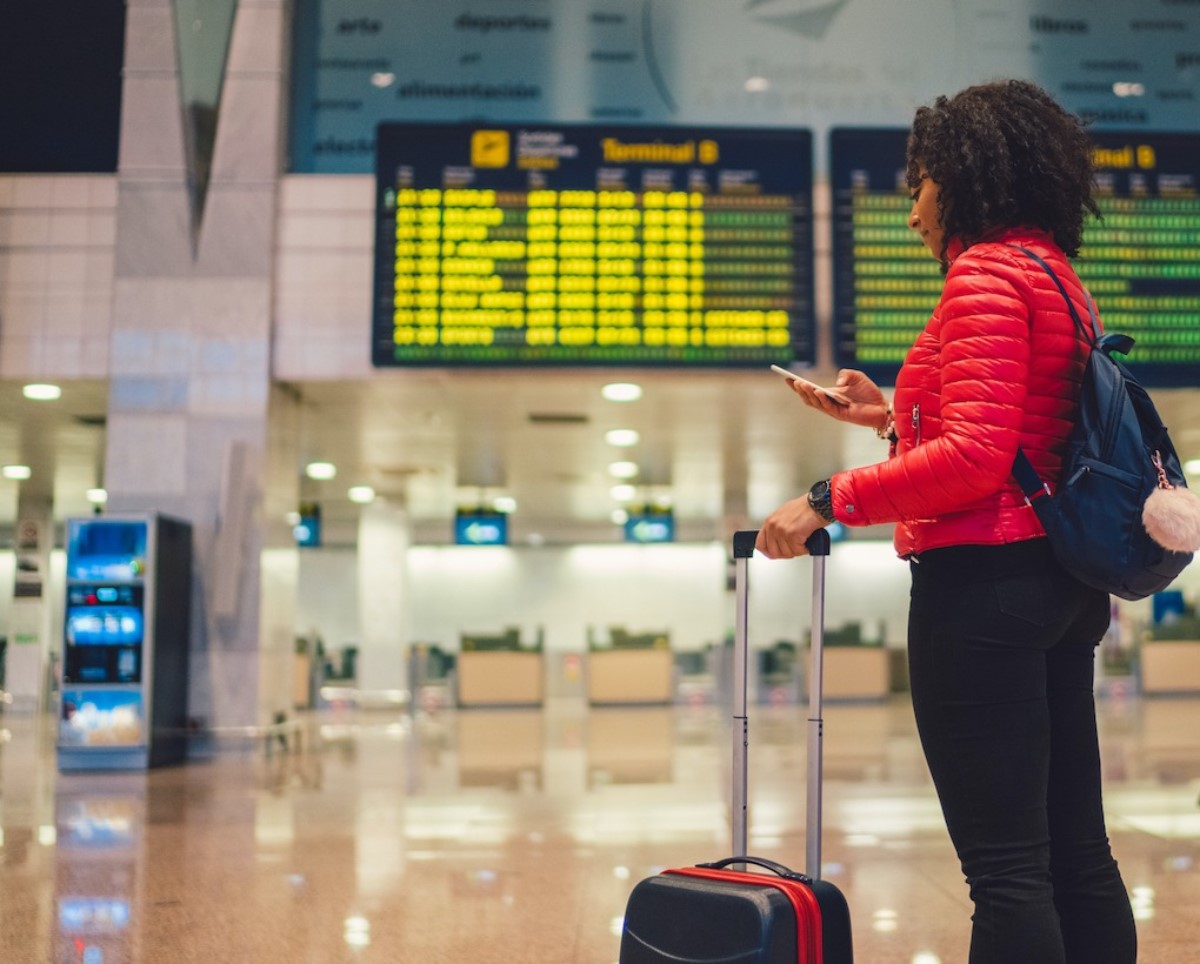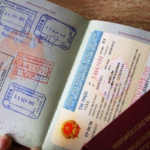When you’re preparing for international travel, you’ll likely come across the term “travel document number.”
This unique identifier plays an essential role in your travel process, as it helps authorities recognize each individual who’s traveling.
This number is typically located on your passport or other travel documents such as visas, and is necessary for visa applications and other official procedures.
Post Contents
What Is a Travel Document Number?

A travel document number, simply put, is a unique set of digits that helps authorities recognize each individual traveling.
This number can be found on the official document you’re using for travel, such as your passport or visa.
In the context of passports, it refers to the unique passport number, which serves as a travel identity document.
Your passport number is typically composed of 9 digits and is located in the top right-hand corner of the page containing your photo.
Each passport has a unique code, and it’s required for visa applications and other official documents.
Remember that your travel document number will differ depending on the type of document you are using for your travel.
You may sometimes encounter other travel document numbers, which can include a combination of letters and numerals.
These document numbers are assigned by the government and can be used to track your activities and ensure compliance with relevant regulations.
Keep the following points in mind about travel document numbers:
- A travel document number is a unique set of digits found on official travel documents like passports and visas.
- For passports, it’s a 9-digit number located at the top right-hand corner of the photo page.
- Other travel document numbers can include a combination of letters and numerals and may be assigned by the government.
- Travel document numbers can be used for visa applications, official documents, immigration purposes, and compliance with regulations.
Make sure to keep your travel documents safe and accessible, as they contain crucial information, including your travel document number, needed for international travel and identification.
Types of Travel Documents
When planning your travel, it’s essential to understand the different types of travel documents you may need.
In this section, we’ll discuss four common documents: Passport, Visa, Re-entry Permit, and Refugee Travel Document.
Passport
A passport is an essential travel document that verifies your identity and citizenship. It’s required for international travel and serves as your primary identification when you’re abroad.
In your passport, you’ll find a unique 9-digit number called the passport number, which serves as your travel document number.
This number is located in the top right-hand corner of your passport and is used for visa applications and other official documents.
You should always keep your passport up-to-date and ensure it doesn’t expire before your trip.
Visa
A visa is another travel document that grants you permission to enter, stay, or pass through a specific country for a specified duration.
Visas come in various types depending on the purpose of your visit, such as tourist, student, or work visas.
Each visa has a unique document number, usually composed of 8 numerical digits, which is different from your passport number.
When applying for a visa, ensure that you have all the necessary documentation and meet the specific country’s requirements.
Re-entry Permit
If you’re a green card holder (permanent resident) and plan to leave the United States for an extended period, you might need a re-entry permit.
This document helps ensure your ability to return to the U.S. after your trip without jeopardizing your permanent resident status.
A re-entry permit has its unique document number, different from your green card number.
To obtain a re-entry permit, you’ll need to file Form I-131 with U.S. Citizenship and Immigration Services (USCIS) before leaving the country.
Refugee Travel Document
A refugee travel document is for individuals in the United States with refugee or asylum status who need to travel internationally.
This document allows you to travel abroad and return to the U.S. without the risk of being denied entry. The refugee travel document has a unique document number, which you’ll find on the document itself.
To apply for a refugee travel document, you’ll need to file Form I-131 with USCIS, just like for a re-entry permit.
Keep in mind that some countries may impose additional entry requirements, so always research your destination’s specific rules before traveling.
Locating Your Travel Document Number
In this section, we will discuss how to locate your travel document number on different documents, such as passports and visas.
The travel document number serves as a unique identifier for your travel records and is essential for various applications and official purposes.
On Passports
Your travel document number is located on your passport. To find it, open the passport to the page containing your photograph.
Your passport number, which doubles as your travel document number, can be found in the upper right-hand corner of this page.
This number comprises 9 digits and is unique to your passport. Remember, the number in this area is crucial for visa applications and other official documentation.
On Visas
For those who need a visa for travel, the travel document number can also be located on your visa. Similar to the passport, the visa has a unique number assigned to it, often referred to as the visa number.
The format of this number might differ across countries. Typically, the visa number is located on the top right or bottom left corner of the document.
Keep this number safe, as it’s essential for tracking purposes and ensuring your visa information is accurate.
When Do You Need a Travel Document Number?
You might wonder when a travel document number is required. Typically, you’ll need your travel document number in a few different situations, some of which include:
Applying for a visa: When you apply for a visa to enter a foreign country, you’ll need to provide your travel document number. This number helps authorities verify your identity and travel history.
Booking international flights: Airlines often require your travel document number to confirm your identity during the booking process. This helps ensure that you are the one traveling and that your documents are valid.
Completing immigration forms: When filling out immigration forms or applications, you may be prompted to provide your travel document number. This information helps authorities track your travel and immigration history more accurately.
- Entering or exiting a country: Upon entering or exiting a country, you may be asked to provide your travel document number at border control or customs checkpoints. This information helps officials track your movements and ensure you are abiding by travel regulations.
It’s crucial to keep your travel documents, including your passport, accessible and organized, as your travel document number forms an integral part of your international travel experience.
Travel Documents Misplacement
Lost or Stolen Passport
If you lose your passport or it gets stolen, it’s essential to act promptly. First, report the lost or stolen passport to your local police.
This helps create a record of the incident and may be required when applying for a replacement.
After filing a police report, contact the nearest embassy or consulate of your home country, as they can guide you on the next steps for obtaining a new travel document.
When abroad, if you lose your passport or it’s stolen, you should also immediately inform your home country’s embassy or consulate.
They can provide you with an emergency travel document, which will allow you to continue your trip or return home.
Replacing Your Travel Document
In the case of a lost or stolen passport, you’ll need to apply for a new one. Ensure you have all required documents and fees before visiting your local passport office.
The process of getting a new passport may take some time, so factor this into your travel plans if you have upcoming trips.
For other types of travel documents, such as visas, you may need to contact the issuing authority (e.g., a foreign embassy or consulate) to request a replacement.
The process for replacing travel documents varies depending on the issuing authority, so it’s important to follow their specific guidelines.
Remember to keep your travel documents safe and secure at all times. Some helpful tips include:
- Store your travel documents in a secure location, such as a locked safe or hidden pocket.
- Don’t carry all your documents together—keep some in a different place as a backup.
- Make copies of your important travel documents, and keep them in a separate location or with someone you trust.
- Use a protective cover for your passport to prevent damage.
- Be cautious while sharing your travel document number or any other personal information, especially online.
Validating a Travel Document Number
When you’re booking a flight or applying for a visa, you’ll need to provide your travel document number. To ensure that the number you provide is accurate and genuine, here are a few key points for validating it.
First, locate your travel document number on your passport or visa.
The travel document number, also known as the passport number, is typically found in the top right-hand corner of the page with your photo. It consists of 9 digits and is unique to your passport.
Now that you’ve found your travel document number, you’ll want to double-check its authenticity. Here are some ways to validate it:
- Examine the format: The travel document number typically contains a combination of letters and numerals, and each country has its own pattern. Make sure your passport number follows the correct format for your issuing country.
- Inspect the holograms and security features: Passports come with various security features, such as holograms and UV elements, to ensure their legitimacy. Examine the pages of your passport carefully to confirm that these features are intact and genuine.
- Confirm its validity through government channels: If you’re unsure about the authenticity of your passport or travel document number, you can always consult the issuing agency or consulate. They can help confirm that the document is valid and current.
Validating your travel document number is essential to ensure a smooth travel experience.
By following these steps, you can easily confirm that your passport or visa is genuine and ready for use as you embark on your journey.






























